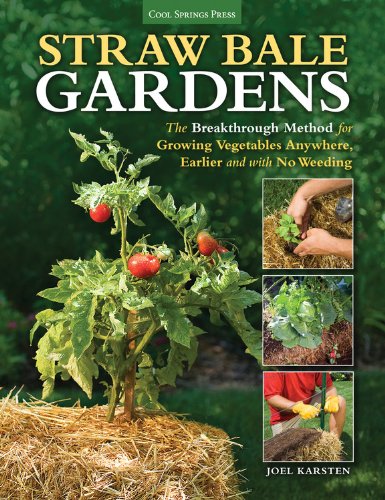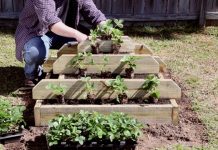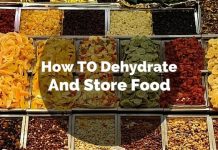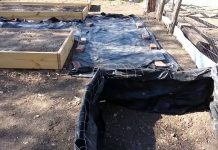Straw Bale Gardening has been exploding in popularity the last several years as gardeners of all ages have embraced the method developed by Author; Joel Karsten.
People with less than desirable soil conditions, thin soil and limited space have had great success raising vegetables where they previously were unable to. Straw bales can be less physically demanding on a person due to the elevated level of the gardening space and the limited amount of weeding necessary. Unfortunately straw bales are heavy; especially when they are wet; so having a helper during initial setup can be beneficial.
The video above does a good job of demonstrating the basic steps of conditioning a straw bale; although the interviewer does mistakenly say hay; make sure you use straw.
Days 1, 3 and 5:
Apply 1/2 cup of nitrogen (34-0-0) or ammonium nitrate (46-0-0) and water thoroughly.
Days 2, 4, 6:
Water thoroughly.
Days 7, 8, 9:
Apply ¼ cup of nitrogen and water thoroughly.
Day 10:
Apply 1 cup of fertilizer. You can use one of the following: general fertilizer (10-10-10) or a covering layer of 2/3 bone meal to 1/3 blood meal, fish meal, a very thick layer of spent coffee grounds, or compost (1″ layer of fresh chicken manure for example) for a more organic approach. Also, to balance the growing medium consider adding potassium by sprinkling on a handful of sulphate of potash (potassium sulfate).
Day 11, 12
Water thoroughly and it should be ready to plant. Confirm this by sticking your hand in the straw. It should not be any warmer than body temperature.
For those with a slower internet connection, the following pdf from the University of Arizona Cooperative Extension gives several outstanding examples and ideas for integrating a straw bale garden into your yard. I particularly like the idea of using metal roofing to encase the bales; although I would imagine that pallets with plastic sheeting would be a much cheaper alternative. If you are able to find some discarded windows; then you would be able to also use the bales as a cold frame as shown.
For more tips and ideas; check out Carolina Straw Bale Gardening on facebook; the pictures of what she has done with the method is simply amazing.
 Straw Bale Gardens: The Breakthrough Method for Growing Vegetables Anywhere, Earlier and with No Weeding
Straw Bale Gardens: The Breakthrough Method for Growing Vegetables Anywhere, Earlier and with No Weeding
You’ll find a bumper crop of vegetable gardening books on the shelves today, but it is a very rare title that actually contains new information. Straw Bale Gardens teaches gardening in a way that isn’t only new but is thoroughly innovative and revolutionary to home gardening. It solves every impediment today’s home gardeners face: bad soil, weeds, a short growing season, watering problems, limited garden space, and even physical difficulty working at ground level. Developed and pioneered by author and garden expert Joel Karsten, straw bale gardens create their own growing medium and heat source so you can get an earlier start. It couldn’t be simpler or more effective: all you need is a few bales of straw, some fertilizer, and some seeds or plants, and you can create a weedless vegetable garden anywhere—even in your driveway.




